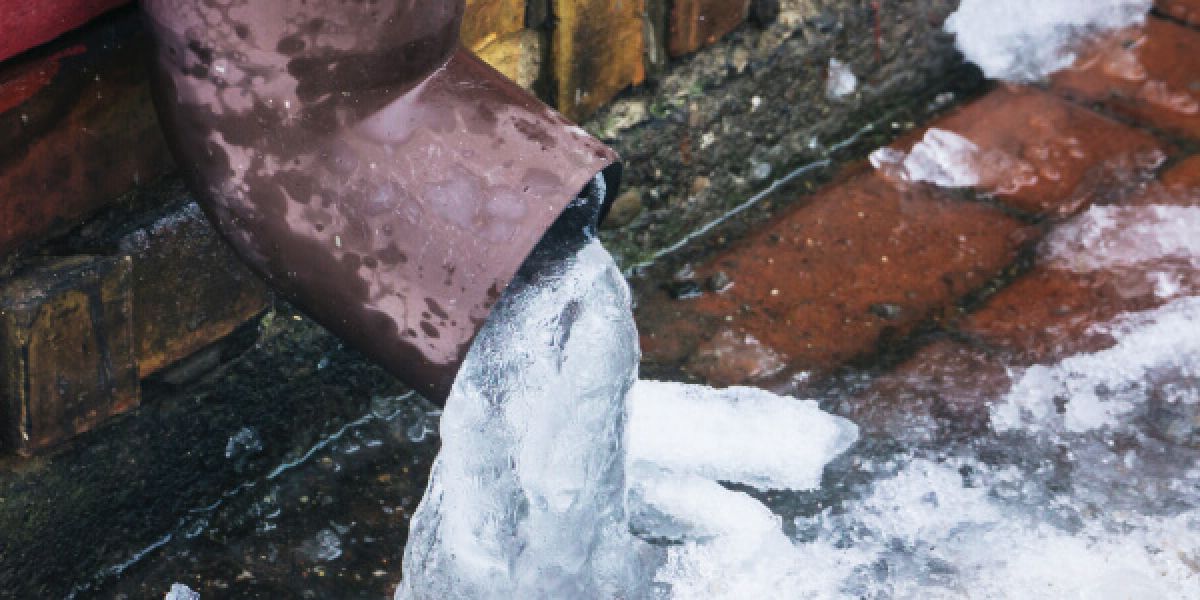They are making a few great points regarding 6 Ways to Prevent Frozen Pipes in general in the article below.

Cold weather can damage your pipes, specifically by freezing pipes. Here's exactly how to stop it from taking place and what to do if it does.
Introduction
As temperatures drop, the danger of frozen pipes increases, potentially resulting in pricey repairs and water damage. Comprehending exactly how to avoid frozen pipelines is important for home owners in cold climates.
Understanding Icy Pipelines
What triggers pipes to ice up?
Pipes freeze when exposed to temperature levels below 32 ° F (0 ° C) for extended periods. As water inside the pipes ices up, it broadens, taxing the pipeline walls and possibly creating them to break.
Threats and problems
Icy pipelines can bring about supply of water interruptions, property damages, and pricey repair services. Ruptured pipes can flood homes and create substantial structural damage.
Indicators of Frozen Piping
Determining frozen pipes early can stop them from rupturing.
How to determine icy pipelines
Seek reduced water circulation from taps, uncommon odors or sounds from pipelines, and visible frost on subjected pipes.
Prevention Tips
Protecting susceptible pipelines
Wrap pipelines in insulation sleeves or utilize heat tape to secure them from freezing temperature levels. Concentrate on pipes in unheated or external areas of the home.
Heating techniques
Maintain interior rooms properly heated up, especially areas with plumbing. Open up closet doors to enable cozy air to flow around pipelines under sinks.
Securing Outdoor Plumbing
Yard pipes and outside taps
Disconnect and drain yard tubes prior to winter. Set up frost-proof faucets or cover outside faucets with shielded caps.
What to Do If Your Pipelines Freeze
Immediate activities to take
If you believe icy pipes, keep faucets open to alleviate pressure as the ice thaws. Make use of a hairdryer or towels soaked in hot water to thaw pipes slowly.
Long-Term Solutions
Architectural changes
Think about rerouting pipelines far from outside wall surfaces or unheated areas. Add additional insulation to attic rooms, cellars, and crawl spaces.
Updating insulation
Buy high-quality insulation for pipes, attics, and walls. Correct insulation aids keep regular temperature levels and decreases the risk of icy pipes.
Final thought
Preventing frozen pipelines calls for proactive procedures and fast reactions. By recognizing the causes, indications, and safety nets, homeowners can shield their plumbing during cold weather.
Helpful Tips to Prevent Frozen Pipes this Winter
UNDERSTANDING THE BASICS: WHY PIPES FREEZE AND WHY IT’S A PROBLEM
Water freezing inside pipes is common during the winter months, but understanding why pipes freeze, and the potential problems it can cause is crucial in preventing such incidents. This section will delve into the basics of why pipes freeze and the associated problems that may arise.
THE SCIENCE BEHIND FROZEN PIPES
When water reaches freezing temperatures, it undergoes a physical transformation and solidifies into ice. This expansion of water as it freezes is the primary reason pipes can burst. As the water inside the pipe freezes, it expands, creating immense pressure on the walls. If the pressure becomes too great, the pipe can crack or rupture, leading to leaks and water damage.
FACTORS THAT CONTRIBUTE TO PIPE FREEZING
Low Temperatures: Extremely cold weather, especially below freezing, increases the risk of pipes freezing. Uninsulated or Poorly Insulated Pipes: Pipes located in unheated areas, such as basements, crawl spaces, or attics, are more prone to freezing. Insufficient insulation or lack of insulation altogether exacerbates the problem. Exterior Wall Exposure: Pipes running along exterior walls are susceptible to freezing as they encounter colder temperatures outside. Lack of Heating or Temperature Regulation: Inadequate heating or inconsistent temperature control in your home can contribute to frozen pipes. PROBLEMS CAUSED BY FROZEN PIPES
- Pipe Bursting: As mentioned earlier, the expansion of water as it freezes can cause pipes to burst, resulting in significant water damage.
- Water Damage: When pipes burst, it can lead to flooding and water damage to your property, including walls, ceilings, flooring, and personal belongings.
- Structural Damage: Prolonged exposure to water from burst pipes can compromise the structural integrity of your home, leading to costly repairs.
- Mold and Mildew Growth: Excess moisture from water damage can create a favorable environment for mold and mildew growth, posing health risks to occupants.
- Disrupted Water Supply: Frozen pipes can also result in a complete or partial loss of water supply until the issue is resolved.
WHY CERTAIN PIPES ARE MORE PRONE TO FREEZING
- Location: Pipes located in unheated or poorly insulated areas, such as basements, crawl spaces, attics, or exterior walls, are at higher risk of freezing.
- Exterior Pipes: Outdoor pipes, such as those used for irrigation or exposed plumbing, are particularly vulnerable to freezing as they are directly exposed to the elements.
- Supply Lines: Pipes that carry water from the main water supply into your home, including the main water line, are critical to protect as freezing in these lines can affect your entire plumbing system.
- Underground Pipes: Pipes buried underground, such as those connected to sprinkler systems or outdoor faucets, can be susceptible to freezing if not properly insulated.
https://busybusy.com/blog/helpful-tips-to-prevent-frozen-pipes-this-winter/

I was made aware of that article about How To Avoid Freezing Pipes through someone on our other web address. Sharing is nice. Helping people is fun. Bless you for your time. Come back soon.
Book Service Now